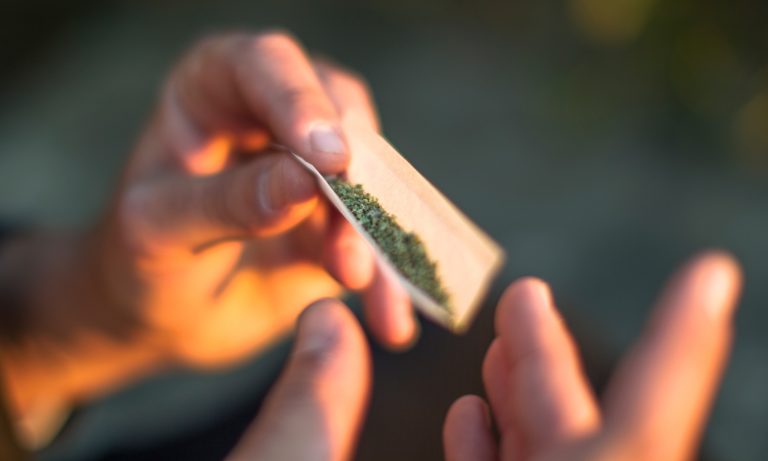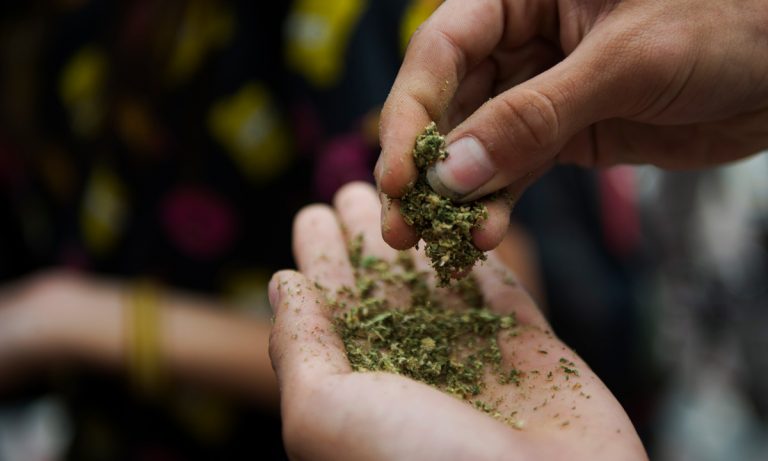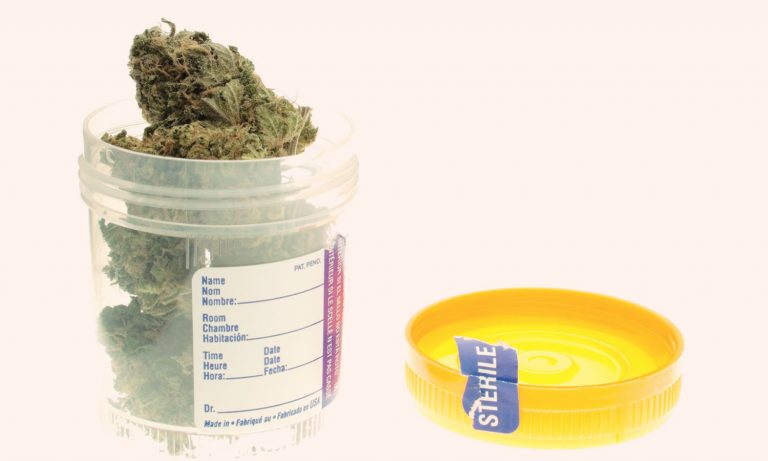Growing marijuana at home (so-called “home grows”) is illegal under US federal law. However, according to the U.S. Sentencing Commission and the FBI 99% of marijuana arrests are made under state law, rather than federal law. Furthermore, states aren’t required to enforce federal law. As a result, in most (though not all) situations, state laws effectively determine whether marijuana growers face criminal risk for their home grows. And, state laws vary dramatically.
You can group states into essentially three groups, based on their cultivation laws:
- States where growing pot for recreational and medicinal use is illegal;
- States where you can grow pot for medicinal use
- States where you can grow pot for recreational use
States that allow recreational cultivation typically have restrictions on the number of plants that adults are able to grow. Many of these states loosen these restrictions for registered patients growing for medicinal use.

Alabama
It is not legal to grow marijuana at home in Alabama.
Source: https://statelaws.findlaw.com/alabama-law/alabama-marijuana-laws.html
Alaska
Adults aged 21 and older can legally grow marijuana at home. The grower does not have to register with the authorities. One person can grow up to 6 marijuana plants, although only 3 of the 6 plants can be mature and flowering at any one time.
If there are at least two 21-year-old adults in the same household, that household can grow up to 12 plants at the same time. However, the limit does not increase if there are more than 2 adults in the household.
Sources: http://dhss.alaska.gov/dph/Director/Documents/marijuana/ResponsibleConsumerFactBook.pdf
https://www.adn.com/alaska-news/2016/07/29/heres-how-many-cannabis-plants-alaskans-ca n-now-legally-possess-at-home/
Arizona
A qualifying patient or the qualifying patient’s designated caregiver who has been approved by the Arizona Department of Health Services may cultivate medical marijuana, so long as the qualifying patient resides more than 25 miles from the closest dispensary.
Any individual who cultivates medical marijuana must do so in a surrounded and protected area. The individual can grow up to 12 plants.
There is no higher limit if there are more than 2 qualifying patients who reside in the same household.
Sources:
https://www.azdhs.gov/licensing/medical-marijuana/index.php#faqs-cultivation
Arkansas
It is not legal to grow Marijuana at home in Arkansas.
Source: https://www.healthy.arkansas.gov/programs-services/topics/medical-marijuana-faqs
California
Anyone who is above the age of 21 can grow marijuana. Each residence is allowed to grow 6 plants, no matter how many adults reside there.
There is a difference in what Prop 215 and SB240 says about growing marijuana by a medical card holder. The former states that a medical card holder can grow as much as needed, and the latter states that only 6 mature plants or 12 immature plants can be grown.
Sources: https://aizmanlaw.com/marijuana-cultivation/
https://www.gorelick-law.com/marijuana-cultivation-2
Colorado
Adults over the age of 21 can grow marijuana. The individual can raise up to 6 plants with 3 plants flowering at once. A house with multiple qualifying adults can grow up to a maximum of 12 plants.
Source: https://www.colorado.gov/pacific/marijuana/home-grow-laws
Connecticut
It is not legal to grow marijuana at home in Connecticut. There is no producer’s license for medical marijuana in Connecticut.
Sources: https://norml.org/laws/item/connecticut-penalties
https://portal.ct.gov/DCP/Medical-Marijuana-Program/Medical-Marijuana-Producer-License
Delaware
It is not legal to grow marijuana at home in Delaware.
Source: https://dhss.delaware.gov/dhss/dph/hsp/medmarfaq.html
Florida
It is not legal to grow marijuana at home in Florida.
Source: http://www.flhealthsource.gov/ommu/faqs
Georgia
It is not legal to grow marijuana at home in Georgia.
Source: https://www.macon.com/news/local/article218984495.html
Hawaii
It is legal for registered patients and registered caregivers to grow marijuana for medicinal purposes in Hawaii. However, growers must register with the state government, and they can grow a maximum of 10 plants
Source: http://health.hawaii.gov/medicalcannabisregistry/patients/growing-medical-marijuana/
Idaho
It is not legal to grow marijuana in Idaho.
Source: https://www.ktvb.com/article/news/local/marijuana-laws-in-idaho-whats-legal-whats-not-andwhat-does-it-take-to-face-jail-time/277-6530c414-73d5-4c67-a530-940478763493
Illinois
While it is illegal to use marijuana for recreational purpose in Illinois, the use of medical marijuana is allowed. However, it must be procured from a dispensary. Only companies have access to the medical marijuana cultivator license, making it illegal for individuals to grow marijuana for any purpose.
Source: https://www.illinoislegalaid.org/legal-information/cannabis-or-marijuana...asics
Indiana
It is not legal to grow marijuana at home in Indiana.
Source: https://statelaws.findlaw.com/indiana-law/indiana-marijuana-laws.html
Iowa
It is not legal to grow marijuana at home in Iowa.
Source: https://www.criminaldefenselawyer.com/marijuana-laws-and-penalties/iowa.htm
Kansas
It is not legal to grow marijuana at home in Kansas.
Source: https://www.kansas.com/opinion/opn-columns-blogs/article223398620.html
Kentucky
It is not legal to grow marijuana at home in Kentucky.
Source: https://www.kentucky.com/news/politics-government/article223075125.html
Louisiana
While recreational marijuana remains outlawed, medicinal use is allowed. It is not legal to grow marijuana in Louisiana. The only legal growers in the state are the agriculture centers at Louisiana State University and Southern University.
Source: http://ldh.la.gov/index.cfm/page/2892
Maine
Only adults who are above the age of 21 can grow marijuana. In each residence, a maximum of 6 mature plants and 12 immature plants can be cultivated
Sources:
https://legislature.maine.gov/lawlibrary/recreational_marijuana_in_maine/9419
https://goodtoknowmaine.com/laws/
Maryland
It is not legal to grow marijuana in Maryland. It is only allowed for medicinal use, and it must be purchased from state-licensed dispensaries.
Source: https://mmcc.maryland.gov/Pages/patients_faq.aspx
Massachusetts
Only adults who are above the age of 21 can grow marijuana. In each home, up to 6 plants can be grown. If there are more than 2 adults, 12 plants can be grown
Source: https://www.mass.gov/info-details/marijuana-in-massachusetts-whats-legal
Michigan
Adults who are older than 21 can grow up to 12 marijuana plants at home. Medical caregivers can grow up to 12 plants for up to 5 patients, meaning that caregivers can grow up to 60 plants for patients and an addition 12 plants for themselves. Caregivers must register with the state.
Sources: https://www.michiganradio.org/post/recreational-marijuana-legal-today-michigan-here-are-5-t hings-know-lighting
https://www.clickondetroit.com/michigan-marijuana/growing-marijuana-in-michigan-here-s-w hat-to-know-about-the-law
Minnesota
It is not legal to grow marijuana in Minnesota. It is only allowed for medicinal use, and must be purchased from one of the 8 Cannabis Patient Centers located around the state.
Source: https://www.health.state.mn.us/people/cannabis/patients/patientguide.html
Mississippi
It is not legal to grow marijuana at home in Mississippi.
Source: https://www.criminaldefenselawyer.com/marijuana-laws-and-penalties/mississippi.htm
Missouri
Growing marijuana for recreational use is illegal in Missouri. Beginning in July of 2019, Missouri will accept applications for medical marijuana cards. The state plans to allow medical marijuana cardholders to grow marijuana at home in “an appropriately secured facility”.
Source:
https://health.mo.gov/safety/medical-marijuana/faqs.php
Montana
Patients who require marijuana for medicinal use can grow up to 4 mature plants or 12 seedlings. However, growing for recreational use is not allowed.
Sources:
https://dphhs.mt.gov/marijuana/cardholders/cardholderfaq#159672069-how-many-plants-can -i-have-if-im-on-the-montana-marijuana-registry
Nebraska
It is not legal to grow marijuana for either recreational or medicinal use.
Source: https://norml.org/laws/item/nebraska-penalties-2
Nevada
Any individual above the age of 21 can grow marijuana at home but only if there are no state-licensed retail marijuana store within 25 miles of the home.
An adult can only grow up to 6 plants and a maximum of 12 plants per household. Registered medical marijuana user may grow up to 12 plants provided they live 25 miles from the nearest marijuana dispensary or if the person is unable to travel to a medical marijuana dispensary due to illness or lack of transportation.
Sources: http://marijuana.nv.gov/Legal/GrowingAtHome/
http://www.nvdispense.com/portfolios/right-grow-cannabis-home-elevate-nevada/
New Hampshire
It is not legal to grow marijuana at home in Hampshire, for either recreational or medicinal use.
Source: https://www.watchdog.org/new_hampshire/new-hampshire-bill-to-allow-home-marijuana-cult ivation-stalls-in/article_31976612-522d-11e8-95e7-774e9da58d0c.html
New Jersey
It is not legal to grow marijuana for either recreational or medicinal use.
Sources: https://www.newsweek.com/marijuana-new-jersey-legalization-legal-states-laws-612844
New Mexico
A Qualified Patient who has a Personal Production License issued by the NM Department of Health can grow a maximum of 12 seedlings and 4 mature plants. A single location cannot have more than 2 personal production licenses
Sources: https://nmhealth.org/about/mcp/svcs/pdb/
http://164.64.110.134/parts/title07/07.034.0004.html
New York
It is not legal to grow marijuana at home in New York.
Source: https://www.health.ny.gov/regulations/medical_marijuana/faq.htm
North Carolina
It is not legal to grow marijuana at home in North Carolina.
Source: https://statelaws.findlaw.com/north-carolina-law/north-carolina-marijuana-laws.html
North Dakota
It is not legal to grow marijuana at home in North Dakota.
Source: https://www.ndhealth.gov/mm/PDF/Program_Informational_Guides/FAQ%20for%20Patients-C aregivers%20-%20Updated%206-21-2018.pdf
Ohio
It is not legal to grow marijuana at home in Ohio.
Source: https://www.medicalmarijuana.ohio.gov/patients-caregivers
Oklahoma
A registered medical marijuana patient who needs marijuana for medicinal use can grow it. Only 6 mature plants and 6 seedlings can be grown at a time.
Source: http://omma.ok.gov/adult-patient-application-information2
Oregon
It is legal to grow marijuana provided you are older than 21. For recreational use, 4 plants per residence can be grown. Patients registered with the Oregon Medical Marijuana Program can grow up to 6 plants.
Sources: https://www.oregon.gov/olcc/marijuana/pages/faqs-personal-use.aspx
https://www.oregon.gov/olcc/marijuana/pages/faqs-personal-use.aspx
https://www.oregon.gov/oha/PH/DISEASESCONDITIONS/CHRONICDISEASE/MEDICALMARIJUA NAPROGRAM/Pages/top20.aspx#patientlimits
Pennsylvania
It is not legal to grow marijuana at home in Pennsylvania.
Source: https://www.health.pa.gov/topics/programs/Medical%20Marijuana/Pages/Patients.aspx
Rhode Island
Qualifying Patients that register with the Rhode Island Department of Health can grow up to 12 mature plants. For residences with more than 2 adults, there is a limit of 24 mature plants per residence.
Sources: http://www.health.ri.gov/healthcare/medicalmarijuana/
http://webserver.rilin.state.ri.us/Statutes/TITLE21/21-28.6/21-28.6-4.HTM
South Carolina
It is not legal to grow marijuana at home in South Carolina
Source: https://statelaws.findlaw.com/south-carolina-law/south-carolina-marijuana-laws.html
South Dakota
It is not legal to grow marijuana at home in South Dakota.
Source: https://statelaws.findlaw.com/south-dakota-law/south-dakota-marijuana-laws.html
Tennessee
It is not legal to grow marijuana at home in Tennessee.
Source: https://www.mpp.org/states/tennessee/
Texas
It is not legal to grow marijuana at home in Texas
Source: https://statelaws.findlaw.com/texas-law/texas-marijuana-laws.html
Utah
It is not legal to grow marijuana at home in Utah.
Source: https://health.utah.gov/medical-cannabis
Vermont
Adults older than 21 can grow marijuana. The limits vary depending on whether the marijuana is for recreational or medicinal use. For recreational use, 2 mature plants and 4 immature plants may be grown per residence. For medicinal use, registered medical marijuana cardholders can grow up to 2 mature plants and 7 immature plants
Sources: https://www.vpr.org/post/you-asked-we-answered-vermonts-recreational-pot-law#stream/0
https://medicalmarijuana.vermont.gov/patients-and-caregivers#cult%20req
Virginia
It is not legal to grow marijuana at home in Virginia
Source: https://statelaws.findlaw.com/virginia-law/virginia-marijuana-laws.html
Washington
Cultivation of marijuana for recreational purposes is not allowed in the state of Washington. However, registered medical marijuana patients may grow up to 6 plants at home. If the healthcare practitioner determines the patient requires more than that, they may authorize up to 15 plants.
Sources: https://www.criminaldefenselawyer.com/resources/can-i-grow-marijuana-my-own-personal-us e-washington.h
https://www.doh.wa.gov/YouandYourFamily/Marijuana/MedicalMarijuana/PatientInformation /PossessionAmounts
West Virginia
It is not legal to grow marijuana at home in West Virginia.
Source: https://dhhr.wv.gov/bph/Documents/MedicalCannabis/Patient%20and%20Caregiver%20Info% 2004202017%20-%20rev.pdf
Wisconsin
It is not legal to grow marijuana at home in Wisconsin
Source: https://shepherdexpress.com/hemp/is-it-time-to-reform-wisconsins-cannabis-laws/
Wyoming
It is not legal to grow marijuana at home in Wyoming
Source: https://norml.org/laws/item/wyoming-penalties-2









